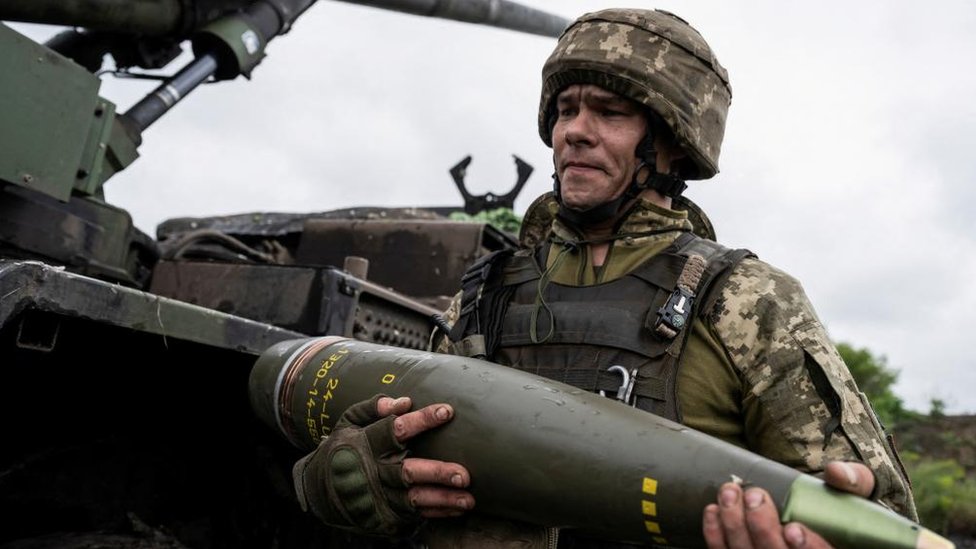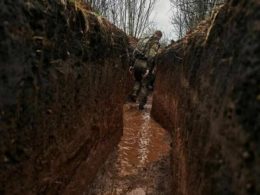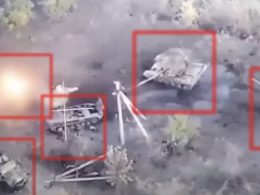After more than four months of heavy fighting, the Ukrainian stronghold of Avdiivka in the Donetsk Oblast (eastern Ukraine) fell to Russian forces. Last week, Russian troops cut off key ground lines of communication that Ukraine used to supply the Avdiivka garrison and evacuate the wounded. As the encirclement of the Ukrainian forces loomed, the newly appointed Commander-in-Chief, Colonel General Oleksandr Syrskyi decided to withdraw all Ukrainian troops from Avdiivka.
Shortly after Russian troops occupied Avdiivka, the Russian military command renewed attacks on Ukrainian positions on the southern front, attempting to capture Robotyne in the Zaporizhzhia Oblast (southeastern Ukraine), which Ukraine’s Armed Forces liberated during the summer counteroffensive in 2023.
At the same time, the Russian army managed to advance in other parts of the eastern front. Continuously bombarding Ukrainians with glide bombs and artillery shells of all possible calibers, the Russian army forced Ukrainian troops to withdraw from some positions in the Bakhmut sector (Donetsk Oblast), near Mariinka (Donetsk Oblast) and in the Kupiansk sector in the Kharkiv and Luhansk Oblasts (eastern Ukraine).
Thus, Russia has regained strategic initiative along the entire frontline, stretching more than 1,200 kilometers from the Mykolaiv Oblast in southern Ukraine to the Kharkiv Oblast in the east.
Due to the acute shortage of artillery shells, Ukrainians are forced to ration their ammunition. The Russians, on the other hand, have intensified their artillery fire and continued to rain aerial glide bombs on Ukrainian troops. The lack of air defense systems and fighter jets makes it difficult for Ukraine to counter Russia's air superiority on the frontline.
Aerial bombs enable Russian advances on Avdiivka; encirclement looms
However, despite the limited means of destruction of Russian aircraft, last week Ukrainians managed to shoot down four Russian fighters and bombers in the skies over the occupied territories of Ukraine.
In the meantime, Ukraine continued to use long-range kamikaze drones to target strategic facilities deep behind the enemy lines inside Russia, hitting Russian oil refineries and weapons manufacturing plants in the Russian rear.
The situation for Russia's Black Sea Fleet near occupied Crimea (southern Ukraine) has deteriorated after Ukrainian naval kamikaze drones destroyed another large Russian landing ship, Caesar Kunikov, near the occupied Ukrainian peninsula. This is the fourth large Russian landing ship destroyed by Ukraine since the start of the full-scale invasion in February 2022.
The fall of the Ukrainian stronghold
Russia launched its onslaught on Avdiivka on 9 October 2023, attacking the Ukrainian city from several directions simultaneously: from northeast, east, south, southwest, and southeast. After almost a month of heavy fighting, Russian troops managed to advance a little on the flanks north and south of Avdiivka.
However, this advance came at a significant cost and did not solve any of the tasks set by the Russian command. All key ground lines of communication of the Ukrainian garrison in Avdiivka remained under firm Ukrainian control, which allowed Ukraine to rotate its troops and supply them with ammunition, fuel, and food.
Tactically, capturing Avdiivka allows Russia to control vital roads and the railway to Donetsk, which has been occupied by Russia since 2014. Avdiivka is less than ten kilometers north of Donetsk, a vital Russian logistics hub in eastern Ukraine. Control over Avdiivka allowed Ukraine’s Armed Forces to strike at all Russian ground lines of communication around Donetsk using tube artillery.

After two months of the Avdiivka offensive, heavy casualties, and minimal territorial gains, Russia regrouped its forces for a new round of massive onslaught on the Ukrainian stronghold and continued infantry-led attacks (so-called “meat assaults”) on the northern and southern flanks of Avdiivka, attempting to encircle the city.
At the beginning of 2024, the Ukrainian defense of Avdiivka was stable despite constant Russian pressure on the flanks (south and north of the city). Ukraine’s Armed Forces effectively used kamikaze drones and cluster munitions to halt Russian infantry-led attacks in critical sectors of the Avdiivka defense.
Although the Russian military command continued reinforcing its grouping in the Avdiivka sector, Ukrainians kept holding the line. Russian territorial gains around Avdiivka were still minimal and did not threaten the imminent encirclement of the city.
In January 2024, Russia intensified its aerial bombardments of the Ukrainian garrison in Avdiivka, razing the city to the ground with glide bombs. Ukrainian troops in the Avdiivka sector had to withstand dozens of air strikes daily.
Within a few months of the Avdiivka offensive, Russian bombs turned the city into a pile of ruins. Before the Russian invasion, around 32,000 people lived in Avdiivka. Today, it is a ghost town destroyed by Russian air strikes and relentless artillery fire. Most people have already left the city, fleeing indiscriminate Russian shelling and non-stop aerial assaults. In December 2023, the population of Avdiivka was estimated to be around 1,300 people.
This is how a guided aerial bomb attack far away looks like
Russia has a near limitless supply of these cheap& powerful bombs. With their help, Russia reduced Avdiivka to rubble that Ukrainians could no longer defend
Ukraine has no defense against these bombs, fired by Russian… pic.twitter.com/lfG6PTFzli
— Euromaidan Press (@EuromaidanPress) February 18, 2024
The Russian military command continued to amass forces and throw its troops in the meatgrinder of the Avdiivka offensive, attempting to capture the city's northern suburbs and approach the Ukrainian garrison's critical supply route.
Despite heavy losses, Russian troops advanced east of Stepove, a small town north of Avdiivka. Control of Stepove would allow the Russian army to approach the H0542 road and disrupt the logistics of the Avdiivka garrison. Without the fire control over the H0542 road and the capture of the Avdiivka Coke and Chemical Plant, a heavily fortified area held by Ukrainian defenders northeast of Avdiivka, the Russians could not undermine the stability of Avdiivka's defenses. Ukrainian troops continued to hold the line in these key areas of the Avdiivka sector and did not budge.
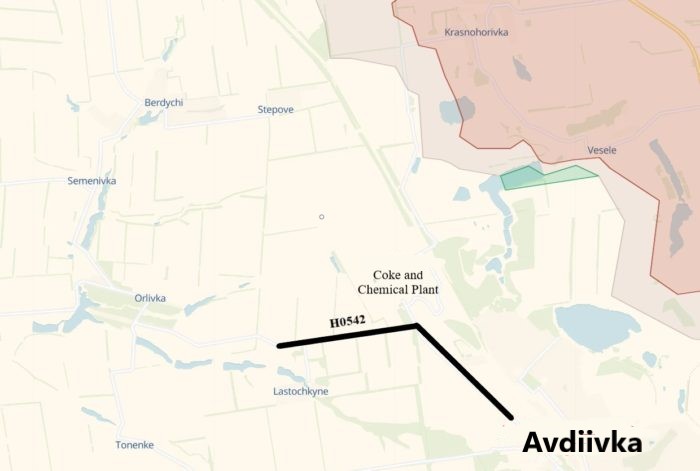
Map by Deep State.
After the Russian offensive stalled north and east of Avdiivka, the Russian army shifted its focus to the southern flank and intensified attacks south, southwest, and southeast of the city. By the end of January, the situation for the Ukrainian garrison in Avdiivka significantly deteriorated after Russian troops infiltrated the rear of the Ukrainian Armed Forces through an underground water pipeline south of the city.
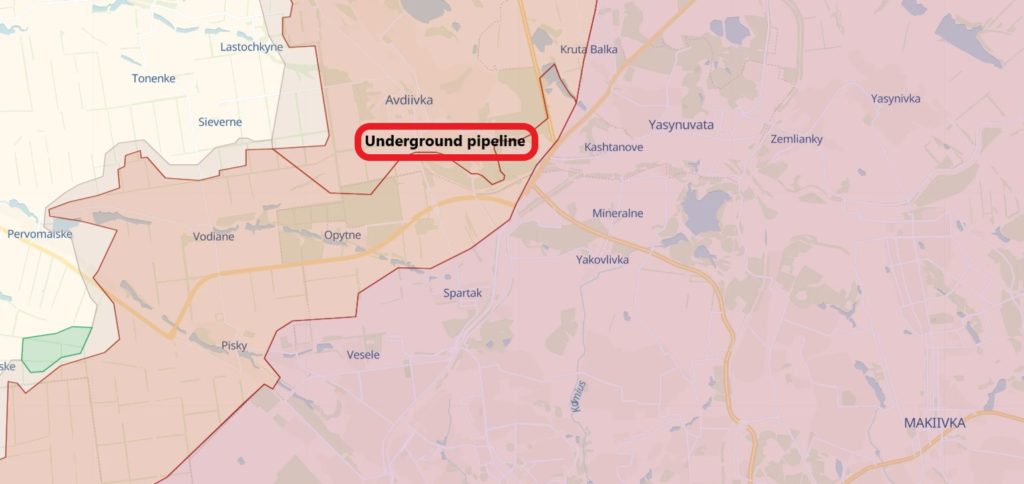
Map by Deep State.
On 18 January, using an underground pipe, Russians entered the rear of Ukrainian troops on the southern outskirts of Avdiivka and took them by surprise. The Ukrainians found themselves outnumbered and surrounded. Some of the Ukrainian defenders were killed, and others were taken prisoner.
At the same time, the Russians managed to break through to the east of Avdiivka and entered the city, advancing block by block. At the beginning of February, the Ukrainian military command deployed reinforcements to the Avdiivka sector to stabilize the situation. The elite Third Assault Brigade of the Ukrainian Armed Forces joined the fight.
Russian vs Ukrainian forces are 7:1 in #Avdiivka
If in Bakhmut, Russians were mix of Wagner convicts & special forces, here Russian contingent is "best strike fist of Russian Federation in Ukraine," consists of GRU & Mechanized brigades, spox of 3 Separate assault brigade… pic.twitter.com/7oPjIMoqQp
— Euromaidan Press (@EuromaidanPress) February 15, 2024
Despite a huge 7:1 numerical advantage, the Russian forces were pushed away from the Ukrainian key supply route north of Avdiivka. However, the Russian army continued to deploy more reserves to outnumber Ukrainian defenders and pushed forward.
On 15 February, Ukrainian troops were forced to retreat after being almost encircled in the Zenith industrial zone, a heavily fortified area south of Avdiivka. The occupation of this area opened the gates to the city from the south. Russian troops entered the southern neighborhoods of Avdiivka and began to advance towards the city's downtown up north, where other Russian units had already approached the key supply route for the Ukrainian garrison and cut it off.
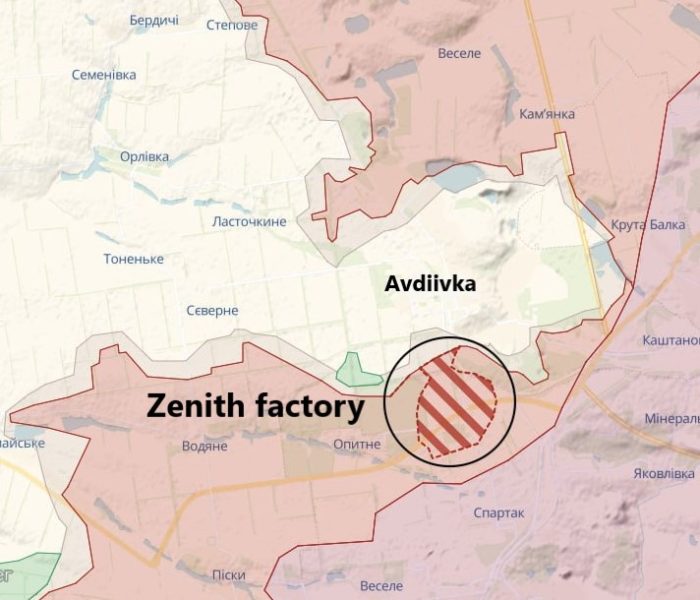
Map by Deep State.
Thus, the increasing Russian pressure to the north, east, and south of Avdiivka made the city untenable for the Ukrainian defenders. The cascading destruction of the defense lines in and around Avdiivka forced Ukrainian troops to retreat.
On 17 February, the Commander-in-Chief of Ukraine's Armed Forces, Colonel General Oleksandr Syrskyi, ordered Ukrainian troops to leave the city to avoid encirclement. The four-month battle for Avdiivka was over.
"Based on the operational situation around Avdiivka, to avoid encirclement and preserve the lives and health of servicemen, I decided to withdraw our units from the city. Our soldiers performed their military duty with dignity, did everything possible to destroy the best Russian military units, and inflicted significant losses on the enemy in terms of manpower and equipment. We are taking measures to stabilize the situation and maintain our positions. The life of military personnel is the highest value. We will take Avdiivka back," Oleksandr Syrskyi wrote on Facebook.
According to the Russian media, Russia’s military command deployed 16 brigades (around 50,000 troops) to the Avdiivka sector to capture the Ukrainian stronghold. The congratulatory letter that Russian President Vladimir Putin sent to the commander of the Center grouping of the Russian army, Colonel General Andrey Mordvichev, responsible for the Avdiivka offensive, revealed the complete list of Russian military units that took part in the active phase of the operation:
- 30th Separate Motorized Rifle Brigade of the Central Military District
- 35th Separate Motorized Rifle Brigade of the Central Military District
- 55th Separate Motorized Rifle Mountain Brigade of the Central Military District
- 74th Separate Motorized Rifle Brigade of the Central Military District
- 1st Separate Motorized Rifle Brigade of the 1st AC
- 9th Separate Motorized Rifle Brigade of the 1st AC
- 114th Separate Motorized Rifle Brigade of the 1st AK
- 1454th Motorized Rifle Regiment of the 1st AK
- 10th Tank Regiment of the 1st AK
- 6th Tank Regiment of the 90th Tank Division of the Central Military District
- 80th Tank Regiment of the 90th Tank Division of the Central Military District
- 239th Tank Regiment of the 90th Tank Division of the Central Military District
At least four more Russian brigades reinforced the aforementioned units at various stages of the Avdiivka offensive.
Ukraine deployed at least 14 military units (around 8,000 troops) at different stages of the defensive operation in the Avdiivka sector. The list of Ukrainian units that took part in the defense of Avdiivka is as follows:
- 110th Separate Mechanized Brigade
- 53rd Separate Mechanized Brigade
- 47th Separate Mechanized Brigade
- 67th Separate Mechanized Brigade
- 3rd Separate Assault Brigade
- 71st Hunting Brigade
- 68th Hunting Brigade
- 59th Motorized Infantry Brigade
- 36th Marine Brigade
- 35th Marine Brigade
- 129th Troop Carrier Brigade
- 25th Separate Airborne Brigade
- 503rd Separate Marine Battalion
- 45th Separate Rifle Battalion
- Omega Special Operations Forces unit
- The International Legion of Territorial Defence of Ukraine
- Ukraine’s Main Directorate of Intelligence units
- Separate Presidential brigade
- 24th Border Guard Detachment
Ukrainians managed to retreat from Avdiivka in an organized manner and maintain the combat capability of the units defending the city for many months. The capture of Avdiivka became a Pyrrhic victory for the Russian army due to the extremely high level of personnel and military equipment losses.
https://twitter.com/EuromaidanPress/status/1758859710529159200
to an OSINT analyst, NAALSIO, who documents Ukrainian and Russian military equipment losses based on photo and videographic evidence, from 9 October to 17 February, Russia lost 666 units of military equipment in the Avdiivka sector. Ukraine lost 57 units of equipment while defending Avdiivka. Thus, the ratio of losses is almost 14:1 in Ukraine’s favor.
https://twitter.com/EuromaidanPress/status/1757698728297709786
According to the commander of Tavria operational and strategic grouping of Ukraine’s Armed Forces, Oleksandr Tarnavskyi, the Russian army has lost almost 50,000 soldiers and over 1,300 units of military equipment during the active phase of fighting for Avdiivka since 10 October 2023. Within the last week alone, Ukrainian defenders managed to take down five Russian aircraft on the eastern front.
“The Ukrainian defenders inflicted huge losses on the Russian military and destroyed a significant reserve of the Russian occupying forces, which they had planned to use in other areas of the front for offensive actions,” Oleksandr Tarnavskyi said.
According to Oleksandr Tarnavskyi, from 10 October 2023 to 17 February 2024, the losses of the Russian troops in the Avdiivka direction amounted to:
- 47,186 personnel;
- 364 tanks;
- 248 artillery systems;
- 748 armored fighting vehicles;
- five aircraft.
After the occupation of Avdiivka, Russian troops continued their offensive, demonstrating that they have reserves for further advancement in this sector of the eastern front. Currently, Russian forces are attacking Lastochkyne, a small town east of Avdiivka. The coming weeks will show whether Ukraine has successfully prepared a sustainable line of defense in this area after withdrawing troops from Avdiivka.
Russian winter offensive on eastern and southern fronts
The Russian army has also stepped up its offensive in other areas of the eastern front. Russian troops tried to advance near Kupiansk in the Kharkiv Oblast, in the Bakhmut sector (Donetsk Oblast), and near Novymykhailivka, south of Mariinka in the Donetsk Oblast.
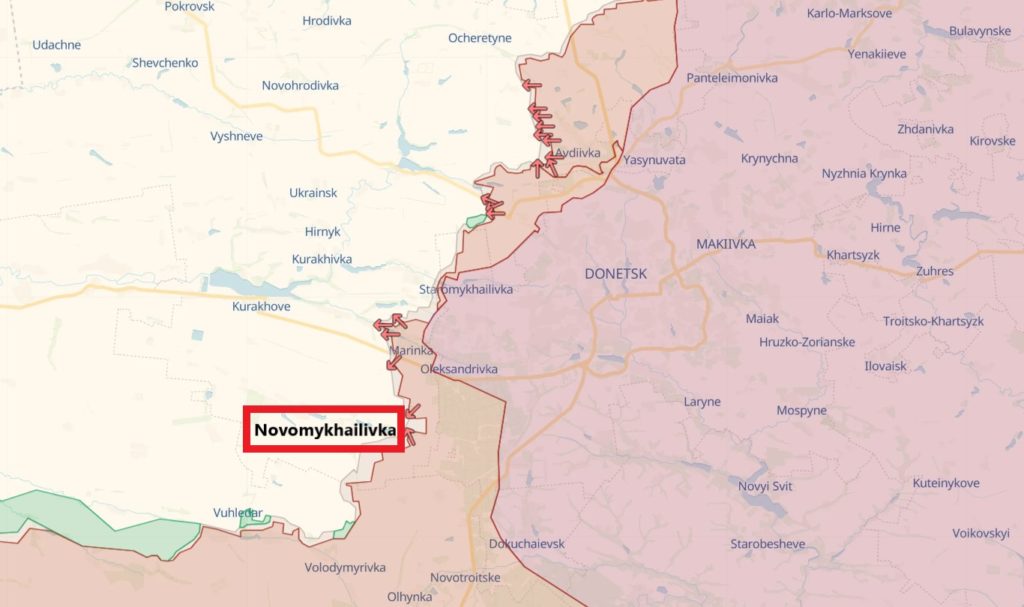
Map by Deep State.
After the Russian army razed Mariinka to the ground and occupied the deserted ruins, Russian troops continued to advance west of the city, albeit slowly.
https://twitter.com/EuromaidanPress/status/1759503140989083945
In the Kupiansk sector, the Russians continued frontal assaults, hitting a wall of well-organized Ukrainian defense in the area of Synkivka. The Ukrainians are holding their ground despite the Russian advantage in ammunition, artillery systems, tanks, armored vehicles, manpower, and aircraft.
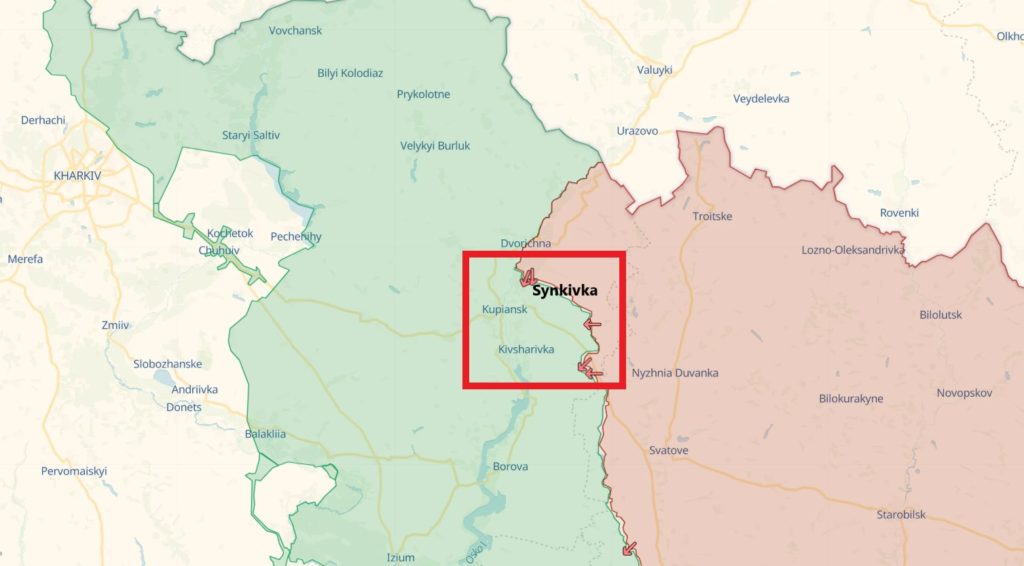
Map by Deep State.
In the Bakhmut sector, the Russian army intensified its attacks, attempting to approach Chasiv Yar, a heavily fortified Ukrainian town east of occupied Bakhmut. At the same time, the Russians tried to advance south of Bakhmut towards Klishchiivka, Andriivka, and Kurdiumivka, which the Ukrainian Armed Forces liberated in the summer of 2023. Thus, the Russians continue to try to capture the entire Donetsk Oblast, more than half of which is already occupied.

Map by Deep State.
Apart from offensive operations on the eastern front, the Russian army intensified its attacks on the southern front. The Russian military command has amassed forces near Robotyne in the Zaporizhzhia Oblast (southeastern Ukraine), which Ukraine liberated last summer. Over the past few days, the Russian army has launched a series of attacks on Robotyne, attempting to advance from the south and east of the town. Ukrainian forces have repelled all the assaults.
The southern front may become the next hot spot on the war map, as there are signs that Russia is preparing an offensive in this sector, according to the Deep State, a Ukrainian OSINT monitoring group.
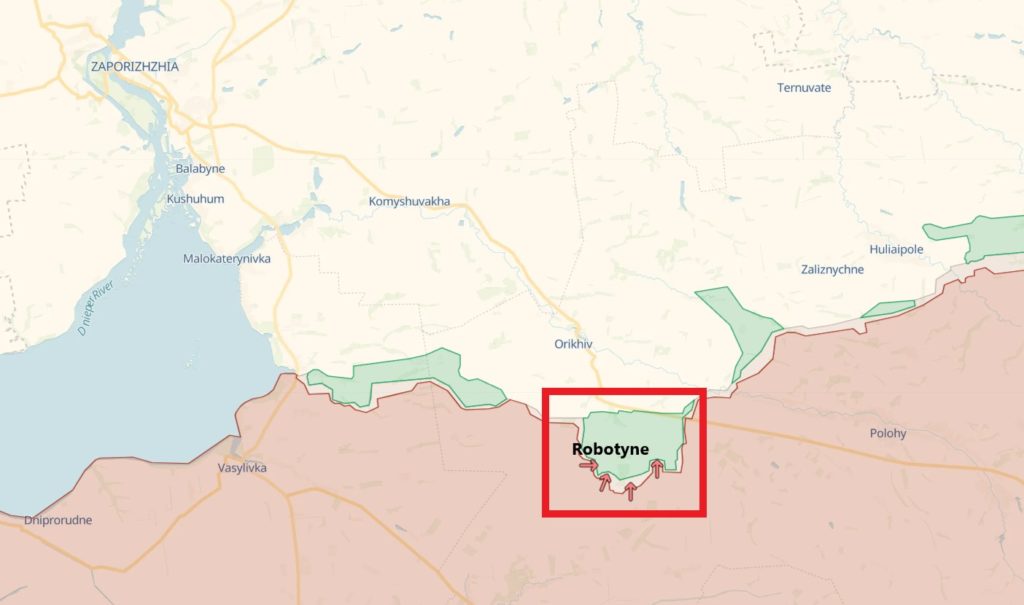
Map by Deep State.
Ammunition shortages due to the suspension of US military aid, as well as increased Russian pressure along the entire front, make further advances by Russian forces near Robotyne and other frontline towns in eastern and southern Ukraine highly likely in the next few months.
Meanwhile, Ukraine is trying to offset Russia's advantage in manpower and military equipment by using high-tech weapons, both Ukrainian-made and those provided by the Western allies. The Ukrainian Armed Forces started to use the long-range Ground Launched Small Diameter Bomb (GLSDB) to hit Russian troops in the occupied territories of Ukraine, the Defense Express, the Ukrainian OSINT group, reported.
The Ukrainian Armed Forces became the first in the world to use the GLSDB, a novel glide bomb not yet in the US arsenal capable of hitting targets within an operational range of 150 kilometers.
This video appears to be the first recorded instance of the use of a Ground Launched Small Diameter Bomb (GLSDB) by Ukraine's Armed Forces
The video was published by a Russian military blogger on Telegram. The Russians claim that the wreckage of the GLSDB was found after a… pic.twitter.com/4dO6Og3uAo
— Euromaidan Press (@EuromaidanPress) February 14, 2024
Russian troops filmed the GLSDB’s debris and posted it online. The Russians claimed that the wreckage of the GLSDB was found after a strike on Russian forces on 13 February near Kreminna in the Luhansk Oblast (eastern Ukraine).
Ukraine also actively uses domestically produced long-range kamikaze drones to hit Russian oil refineries and weapons manufacturing plants deep inside Russia. On 15 February, Ukrainian kamikaze drones hit an oil depot in Kursk (western Russia) causing a large fire.
https://twitter.com/EuromaidanPress/status/1757915377387147332
Ukrainian strikes on Russian oil and gas infrastructure have a dual purpose. Firstly, Russian oil refineries and oil depots close to the Russian-Ukrainian border supply the Russian army with fuel needed to continue offensive operations in Ukraine. Secondly, a significant chunk of the Russian budget comes from selling oil and gas. According to various estimates, this figure ranges from 25-35%.
During the first year of the full-scale invasion of Ukraine, in 2022, Russian exports of oil, oil products, and gas reached $383.7 billion, according to data from the Federal Customs Service of Russia. More recent official data is not yet available.
Today, Russia has about 30 large refineries and another 80 mini-refineries. The largest refineries in Russia are located in western and southern parts of Russia, in the following cities: Kirishi (St. Petersburg), Ryazan, Kstovo (Nizhny Novgorod), Volgograd, Yaroslavl, Perm, Moscow, and Tuapse. Most of these refineries are within the reach of Ukrainian long-range kamikaze drones.
Ukrainian strikes on the Russian Black Sea Fleet
Besides striking at Russian strategic facilities inside Russia, Ukraine is methodically decimating the Russian Black Sea Fleet near occupied Crimea (southern Ukraine).
On 14 February, Ukrainian naval kamikaze drones destroyed a large Russian landing ship, Caesar Kunikov, off the coast of the Russian-occupied Crimea. It is the fourth landing ship from Russia’s Black Sea Fleet to be sunk since the beginning of the full-scale invasion in February 2022.
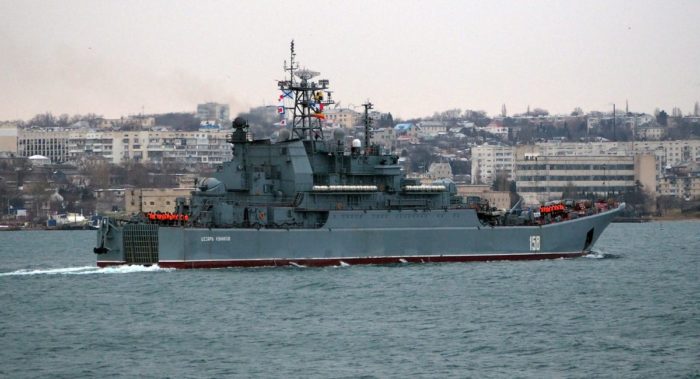
The most recent attack was on 25 December 2023, when the Russian Navy’s Ropucha class Landing Ship Tank (LST) Novocherkassk was destroyed following a Ukrainian missile strike at the port of Feodosia, the south coast of Crimea.
According to Ukraine’s intelligence, the Ukrainian military sank Caesar Kunikov near the Crimean city of Alupka using Ukrainian-made Magura V5 marine drones.
At the beginning of Russia’s full-scale invasion of Ukraine, the landing ship Caesar Kunikov was in the port of Berdiansk and sustained damage when Ukrainian forces sank the landing ship Saratov in March 2022. The Soviet officer, commander of a landing detachment, Caesar Kunikov, after whom the sunk landing ship was named, died on 14 February 1943, the same day the ship bearing his name was destroyed.
Caesar Kunikov was a large landing ship of Project 775, with a length of 112.5 meters, a width of 15 meters, and a draft of 3.7 meters. The ship’s crew comprised 87 personnel. Caesar Kunikov could be used for laying minefields. It could accommodate various loading options, including 150 landing personnel and 10 T-55 tanks with a crew of 40, 12 PT-76 landing tanks with a crew of 36, or a unit consisting of three T-55 tanks with a crew of 12, three 120-mm mortars, three 2G27 combat vehicles, four ZIL-130 trucks, four GAZ-66 trucks, and one GAZ-69 light off-road vehicle. The landing personnel capacity was 147 personnel, and the ship could transport a load of 650 tons over a distance of 4,700 miles. Russia uses large landing ships like this to supply its grouping in Crimea and other occupied regions of southern Ukraine with ammunition, weapons, and fuel.
Thus, Ukraine continues to systematically destroy the Russian Black Sea Fleet using asymmetric methods of warfare. Lacking its own powerful navy, Ukraine relies on domestically produced naval drones to keep Russian ships out of Ukrainian territorial waters.
Related:
- Ukrainian naval drones sink large Russian landing ship Caesar Kunikov
- British Intel: Russian commander of Black Sea Fleet dismissed likely due to Ukraine's successes sinking Russian ships
- Ukraine's drone war across Russia cuts into oil revenues
- Defense Express: Ukraine uses GLSDB for the first time in human history, shocks Russia
- Biden: Lack of ammunition forces Ukraine to retreat from Avdiivka
- Russian forces conduct largest airstrikes near Avdiivka in 2024

